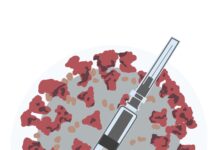It’s time to rethink how you understand the city of Waterloo.
“Oh nisateroten? What clay are you made from?” Indigenous author and professor Susan Hill asked her audience.
Hill’s speech at the Theatre of the Arts on Feb. 13 was part of the Indigenous Speakers Series hosted by the Waterloo Aboriginal Education Centre (WAEC) and the Faculty of Arts. Hill, a wolf clan member of the Mohawk nation, researched the history of the Haldimand Tract, which included the study of roughly 10, 000 pages of handwritten policies. Her newly released book, The Clay We Are Made Of, outlined this history based in Haudenosaunee philosophy and knowledge.
So how does Hill suggest you change your relationship with your city? The self-described “landless Mohawk” emphasized the need for thankfulness and respect, since humans rely on the land for survival. “If those things [in the natural world] disappear, we cease to exist,” she stated.
Hill also stressed that land cannot be “owned” or “possessed.” “It is passed down to you, and you therefore have responsibility for it,” she said. During the question period, one audience member was quick to ask Hill’s opinion on the expression of gratitude in land acknowledgments. “I think that it’s extremely well intentioned, but I think in the case of some institutions it’s an attempt to save face,” she responded. As an alternative, Hill emphasized the importance of the phrase “unceded territory” in land acknowledgments.
“I think all any of us can do is push our institutions to think about the intention behind the words they’re using,” she said. When introducing Hill, Linda Warley, Associate Dean of Arts Graduate Studies, acknowledged the recent trial of Colten Boushie’s accused murderer. She claimed our responsibility is not only to the land, but also to the original people of the land.
“Do not be silent. Be outraged. And use your outrage to contribute to society,” she said.
Hill provided a history lesson on the Waterloo area, from the first treaty between the Haudenosaunee and the British in 1664 to the present day. One noteworthy event was the French and Indian War (1754-63), which Hill claimed the British won due to the assistance of Indigenous peoples.
“The military support provided by the Haudenosaunee people was essential to the British winning the war,” she said. Following this war, the Haudenosaunee were displaced from their homes, so they lived as refugees around the Grand River.
“It was so enlightening to hear the long history of the land that we are standing on today. This is information that everyone needs to be aware of,” said Cass Smolak-Whiteley, a First Nations student who attended the speech.
“The part of Susan’s speech that resonated with me most was how deeply related Indigenous identity is to their land,” said non-Indigenous student Hannah Lightfoot. “It also made me realize how much the land is embedded in my own identity.”
Lightfoot’s reflection mirrored Hill’s expressed goal for her presentation. Hill claimed she learned a lot about herself in her research process.
“I hope you will develop a better understanding of how you got here as well,” she said.





























